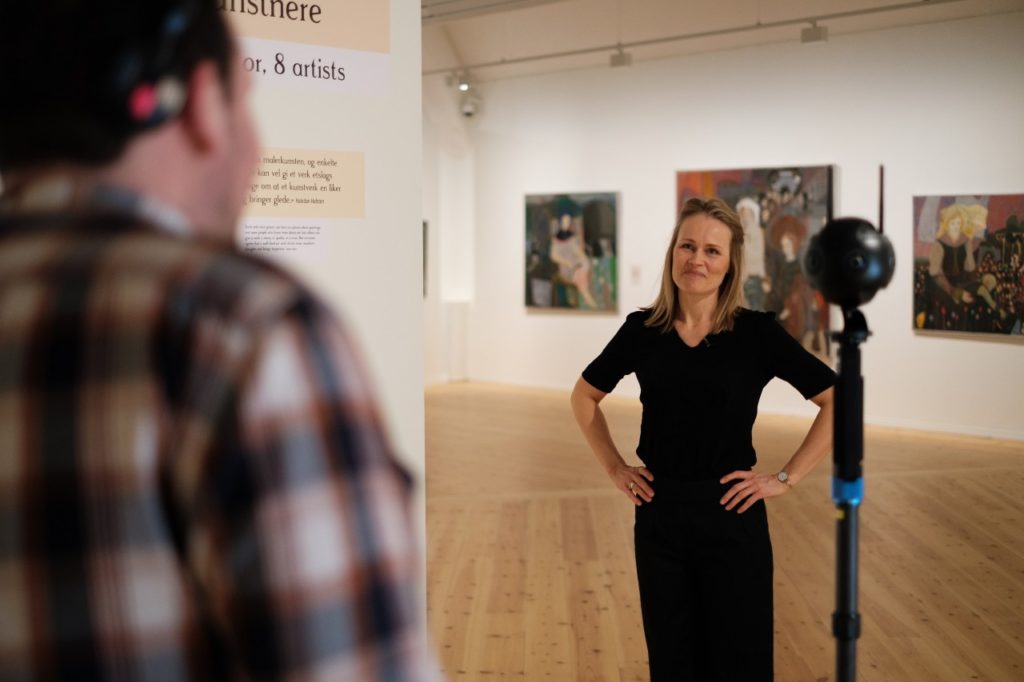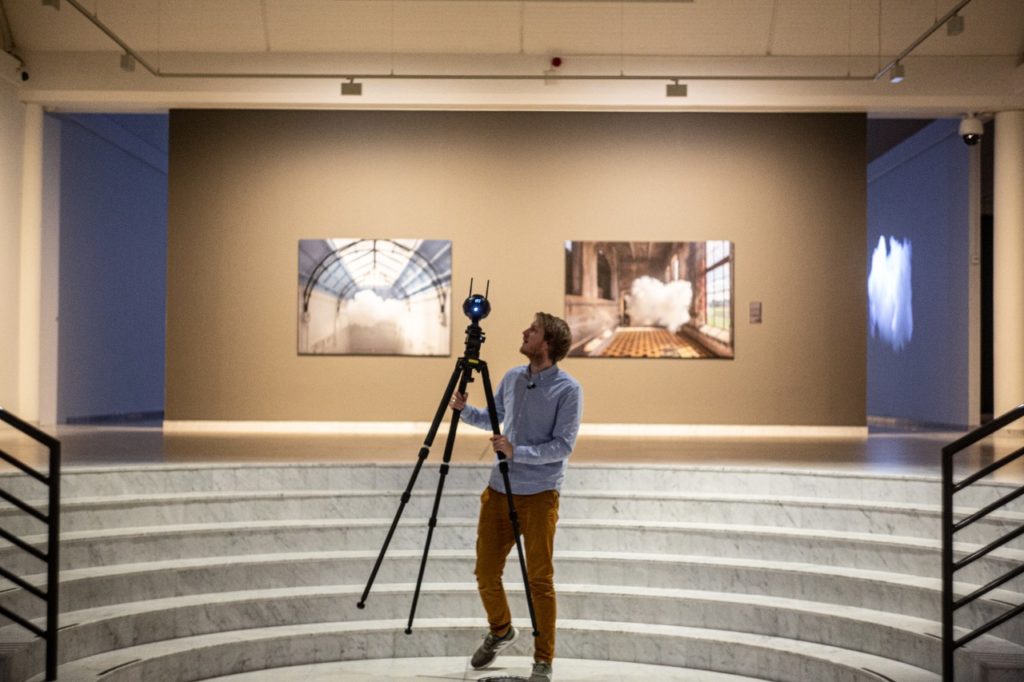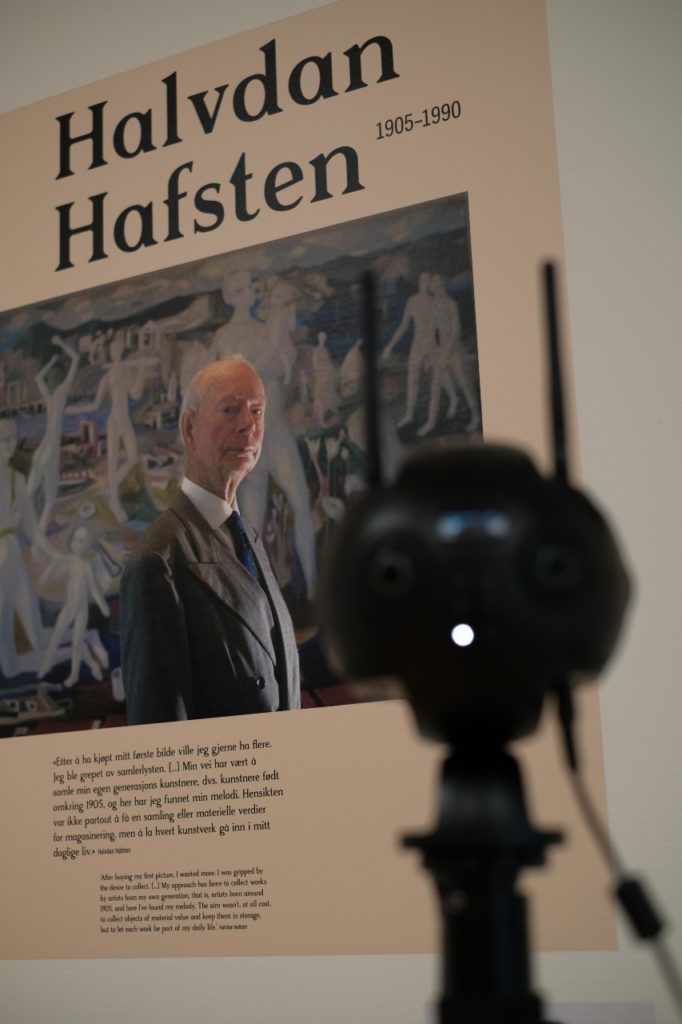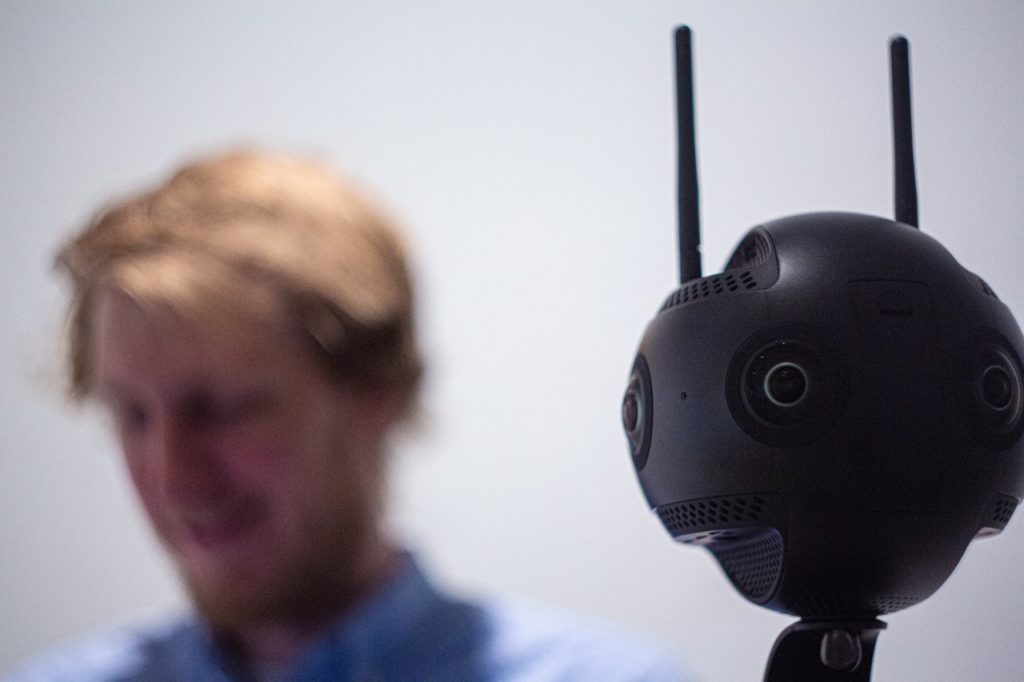Through this project we have confirmed that 360° pictures and videos can indeed be used for educational purposes. But can it also open business opportunities for companies? The answer is yes.
Making art more accessible
By combining 360° photos and videos, Screen Story in collaboration with Stavanger Art Museum, made three virtual tours with the purpose of making art more available for the masses.
Experiencing art can be an enticing experience, but not everyone has the opportunity to visit an art museum for different reasons. Be it physically challenges, geographical impracticalities or an ongoing pandemic. By making a digital representation with the use of 360-video/photo technology, anybody can visit the Stavanger Art Museum and the exhibitions Kitty Kielland, Frida Hansen and The Hafsten collection.
“We have some pretty unique works of art here that’s in the forefront of Norwegian art history,” says Hanne Beate Ueland, director of Stavanger Art Museum.

When the pandemic hit, they closed the museum and sent everybody home. They had to find new ways for the visitors to enjoy the art.
“To experience an art museum is very much about walking into a space and being surrounded by the art. We talked to people who we respect within technology, and they suggested that we contact Screen Story, and we did. They had this project going on with 360-video. We immediately found that quite interesting and inspiring, and it turned out to be project where we could collaborate quite easily,” Ueland continues.
Turning ideas to business
Screen Story took on the task and saw an opportunity to gain new know-how in the field of 360- technology. Project leader at Screen Story, Øyvind Torjusen, says it was a perfect fit.
“This proved to be a great case for the 360ViSi-project. Screen Story’s main task in this project is to look at the transferability to business, and create a 360-product which in turn can be commercialised. Having an actual need from an institution such as the Stavanger Art Museum is a much better starting point than a made-up scenario,” he says.
And action!
The recording process took a total of six days, with over 170 images and 48 videos shot, all in 360 degrees. A script consisting of about 18 pages written by the three mediators, each presenting a different exhibition. A whopping 3.25 TB of data was needed for all the materials.
Shooting in a museum can be a challenge. Lighting conditions are often set in such a way to preserve the art, and not optimal for shooting with a 360-camera which requires a lot of light. And because of the nature of shooting in 360 degrees, there’s nowhere to hide a light rig which complicates shooting even more.

“We had to bring up the brightness of the fixed lights to the maximum while shooting, but even then it was a bit too dark in some of the rooms,” says Stian Skjerping, videographer at Screen Story.
This meant some extra hours in post-production to brighten the footage.
“But when you brighten the footage you add more noise to the image as well, which meant we had to use some noise removal tools to clean it up,” he continues.
Making a great user experience
When all the footage was colour corrected and cleaned up, the assembling of the tour began. Every image and video must be linked together so that the viewer can move seamlessly through the exhibitions. Along the way, new ideas and solutions were discussed to make the user experience the best possible.

“Stavanger Art Museum wanted a simpler way to reach more content, so we came up with a top bar with a menu where you quickly can navigate to all the videos, as well as get help navigating,” says Pål Berg Mortensen, editor at Screen Story.
Moving around a 360 virtual tour can be a challenge, because it’s a relative new product, so there are no set conventions yet. It was therefore important for both Screen Story and the museum to make the tour as intuitive as possible.
“We made an intro where you get some instructions on how to navigate, hopefully making it less intimidating,” says Mortensen.
The museum also wanted to incorporate more information and content about single works of art.
“Early on there were discussions about including more information on individual art pieces, and how that would work. The solution was to create a pop up menu that appears when the the art piece is clicked on. The user can then choose to watch a video about the piece, or see it in high quality and read more about it,” Mortensen explains.
More benefit than traditional video
The Stavanger Art Museum were fascinated by the experience of being able to actually walk through the exhibitions, and see several use cases for the 360 virtual tour.
“It’s something we are able to use, not only towards the general audience but also in our dialogue with other artist we are working with for the coming exhibitions,” Hanne Beate Ueland says.
She sees a clear benefit over “traditional” video:
“One of the most interesting things for us, that separates 360-videos and images from a normal video of a exhibition, is to give people an actual experience of being there and walking around, looking at the artworks, but also reading, and finding more information. That adds a complexity and quality to the project that we liked.”
Hear Director of Stavanger Art Museum Hanne Beate Ueland talk about the process, experiences and benefits of using 360 video from a client perspective:
“It’s great to see that the customer was satisfied with the tour and appreciates all the hard work behind it,” Skjerping says.
The potential for a “360 virtual tour product” is definitively there, and Screen Story has learned a lot in this process moving forward.
“We wanted to create a truly immersive experience where you can interact with the pieces of art, and absorb the atmosphere in the exhibitions. And I think we managed to do that. This is only the beginning of what is possible with the 360-technology,” Skjerping concludes.


